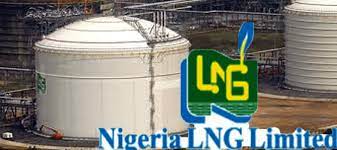Latest reports on Liquefied Natural Gas (LNG) export into the global market indicated that Nigeria recorded a huge shortfall in her export volume in 2022 as challenges in domestic natural gas production and feedstock at export facilities undermined the country’s capacity for production of hydrocarbon resources.
Specifically, the reports indicated that LNG exports from Nigeria and Algeria decreased by a combined 0.5 billion cubic feet per day Bcf/d as both countries contended with similar production challenges.
In 2022, global trade in liquefied natural gas (LNG) set a record high, averaging 51.7 billion cubic feet per day (Bcf/d), a 5 per cent increase compared with 2021, according to data by CEDIGAZ.
Liquefaction capacity additions, primarily in the United States, drove growth in global LNG trade while at the same time, increased LNG demand in Europe also contributed to trade growth as LNG continued to displace pipeline natural gas imports from Russia.
The U.S. LNG exports in 2022 increased by 16 per cent 1.4 Bcf/d to 10.2 Bcf/d compared with 2021, the largest increase of all LNG-exporting countries.
According to the report, in the first half of 2022, after the new Calcasieu Pass LNG export facility was commissioned, the United States became the world’s top LNG exporter for the first time.
However, because the Freeport LNG export terminal shut down, U.S. LNG exports declined in the second half of the year.
The reports further reflected that in the year under review, Qatar and Australia remained the top two global LNG exporters; Qatar’s exports averaged 10.5 Bcf/d, and Australia’s exports averaged 10.4 Bcf/d while LNG exports increased by a combined 1.3 Bcf/d from Malaysia, Norway after Hammerfest LNG returned to service in May, Trinidad and Tobago, Russia, Oman, and Equatorial Guinea.
Among LNG-importing regions, Europe, including Türkiye, had the largest increase in LNG imports globally, increasing by 65 per cent 6.5 Bcf/d compared with 2021. LNG imports declined by 9 per cent 3.2 Bcf/d in Asia and by 34 per cent 0.8 Bcf/d) in Latin America compared with 2021.
However, LNG imports into EU-27 countries and the UK increased substantially in 2022 by 73 per cent, 6.3 Bcf/d compared with 2021 replacing imports by pipeline from Russia.
The report further showed that five countries France, the UK, Spain, the Netherlands, and Belgium increased LNG imports by a combined 5.4 Bcf/d, accounting for 85 per cent of the total increase.
Japan was the top LNG importer for 50 years, until China surpassed Japan in 2021. The following year, in 2022, Japan resumed its position as top LNG importer.
The decline in China was due, in part, to its zero-COVID policies, increased imports by pipeline from Russia, and higher use of coal.
Other Asian countries, particularly those that rely more on global LNG spot markets, reduced spot purchases because of record-high LNG prices last year.
The LNG imports into India, Pakistan, and Bangladesh declined by a combined 18% (0.9 Bcf/d) in 2022 compared with 2021.
In Latin America, Brazil had the largest decrease in LNG imports 70 per cent 0.6 Bcf/d, mainly because the higher availability of electricity from hydropower generation reduced demand for natural gas-fired electricity generation in 2022 compared with 2021.






